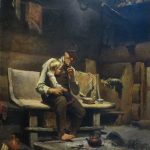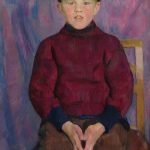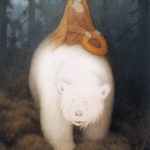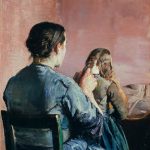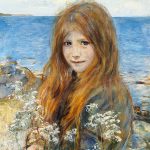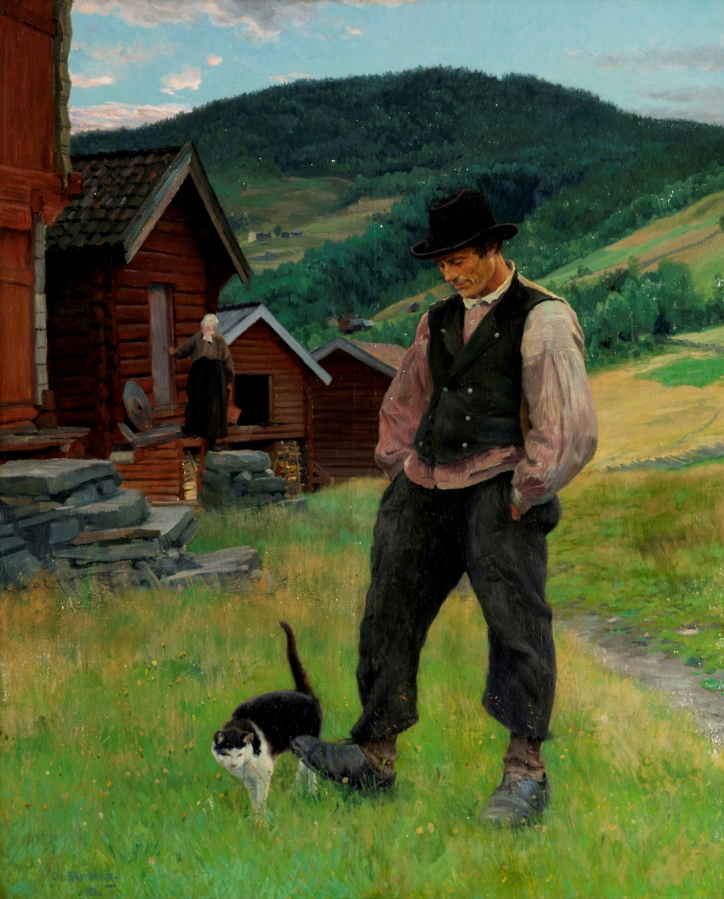
Christian Skredsvig (1854–1924), a Norwegian painter, is celebrated for his significant contributions to the Norwegian naturalist movement and his unique interpretation of rural life. Born on March 15, 1854, in Modum, Norway, Skredsvig’s artistic journey unfolded during a time of cultural and societal changes, and his work reflects a deep connection to the landscapes and people of his homeland.
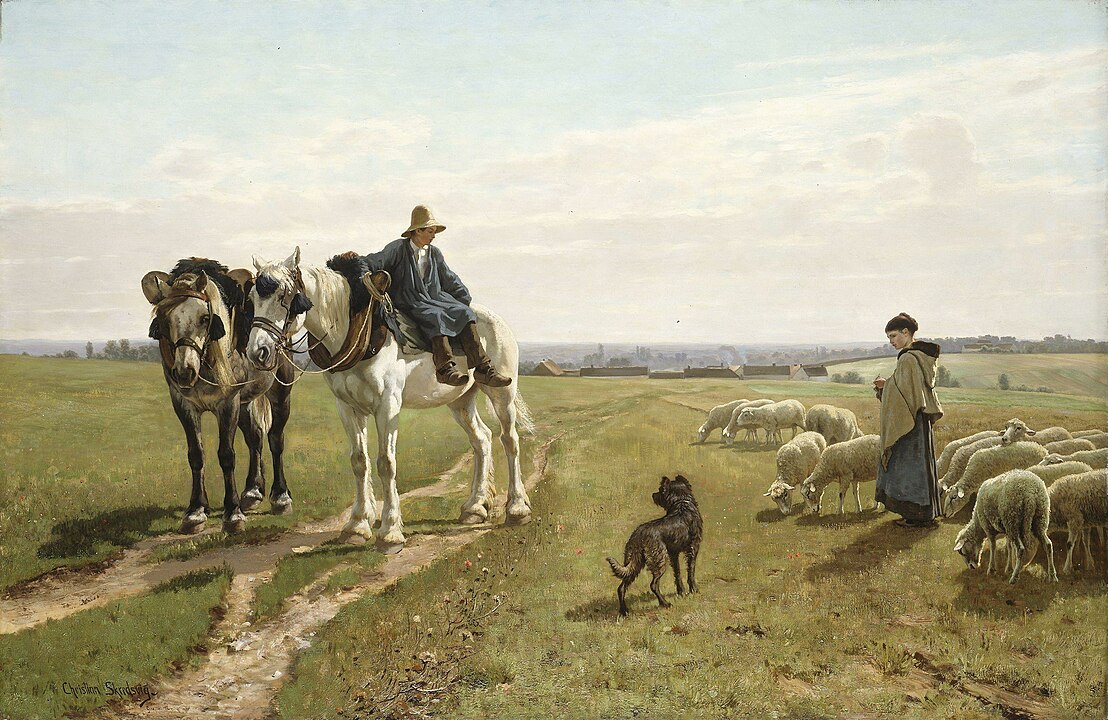
Skredsvig’s early artistic inclinations were nurtured in the picturesque surroundings of Modum. His talent was recognized early on, leading him to pursue formal training at the Royal School of Art and Design in Oslo. Under the guidance of noted Norwegian painter Knud Bergslien, Skredsvig honed his skills and developed a distinctive style that would later distinguish him within the Norwegian art scene.
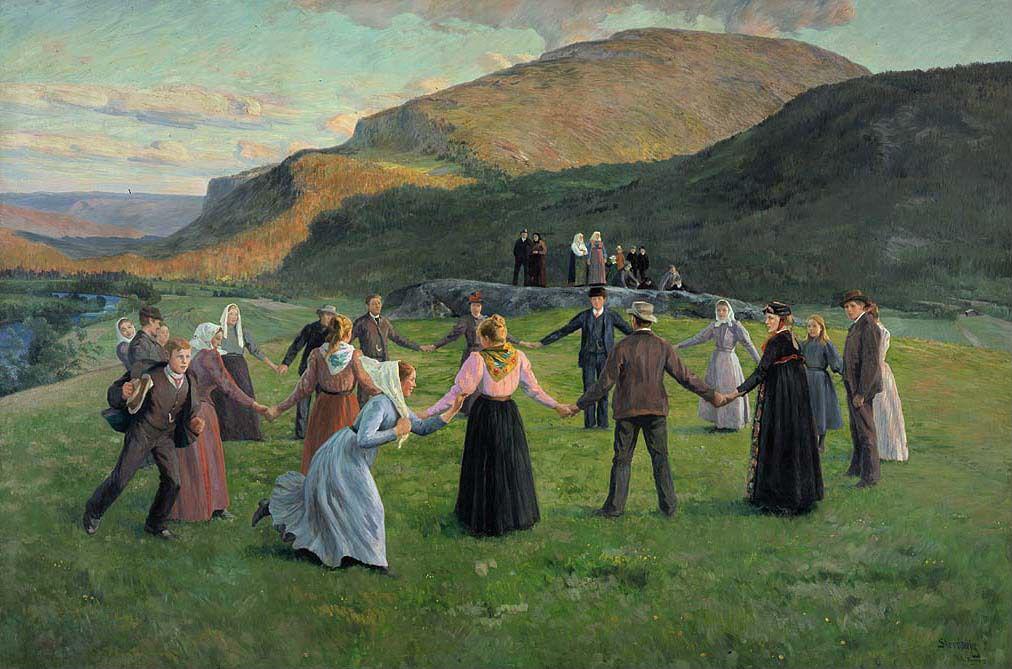
The late 19th century in Norway witnessed a growing interest in naturalism, a movement that sought to depict scenes from everyday life with a focus on realism. Christian Skredsvig emerged as a key figure in this movement, capturing the essence of rural life and the Norwegian countryside in his paintings.
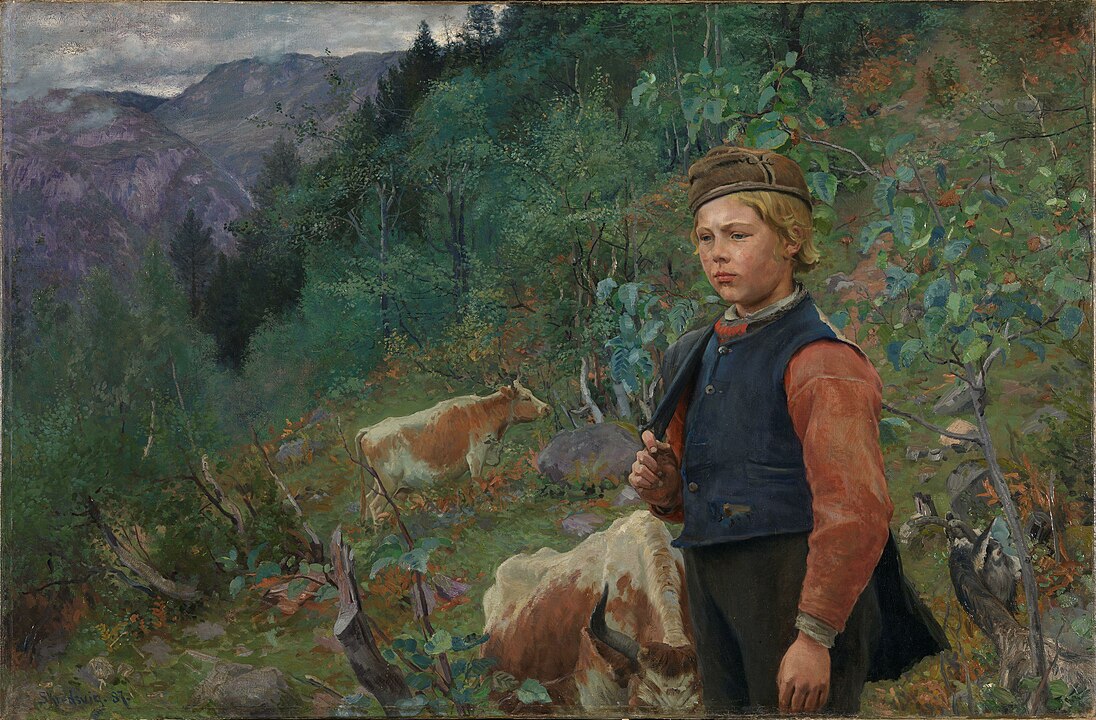
Skredsvig’s works often portrayed the simplicity and beauty of rural existence. His landscapes, characterized by their tranquility and a keen sense of atmosphere, conveyed the changing seasons and the symbiotic relationship between nature and the people. “Winter Evening” and “Spring in the Birch Forest” exemplify his ability to evoke the mood and ambiance of the Norwegian countryside.
Eggedal Involvement
One of Skredsvig’s notable achievements was his involvement with the artist’s colony in Eggedal, a rural community in Norway. Alongside other artists of the time, including Erik Werenskiold and Kitty Kielland, Skredsvig contributed to the formation of a creative enclave that sought inspiration from the surrounding nature and the simplicity of rural life. This collaborative effort marked a significant chapter in Norwegian art history.
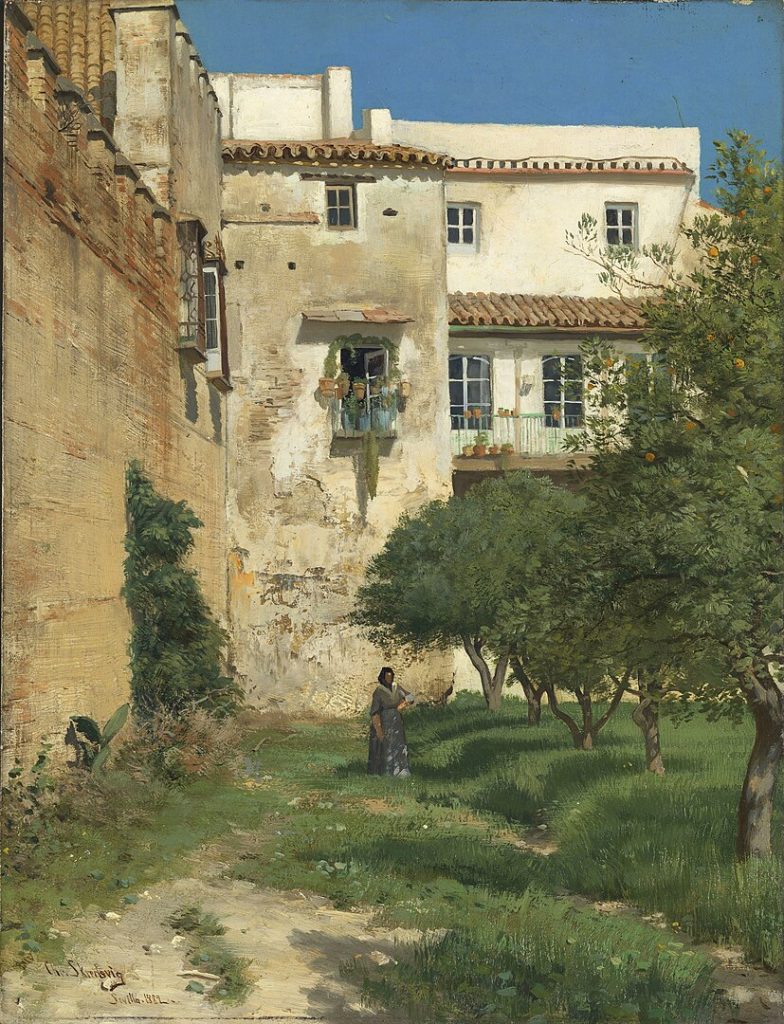
While Skredsvig’s primary focus was on landscapes and rural scenes, he also delved into portraiture and genre painting. His portraits, such as the one of painter Adolph Tidemand, showcased his ability to capture the individuality and character of his subjects. Skredsvig’s genre paintings often depicted scenes from traditional Norwegian life, offering a glimpse into the customs and traditions of the time.
Commitment to Art
Despite facing financial challenges and periods of personal difficulty, Skredsvig’s commitment to his art remained unwavering. His legacy endures as a testament to his dedication to preserving the cultural heritage of Norway through the medium of painting.
Christian Skredsvig passed away on January 19, 1924, leaving behind a body of work that continues to be celebrated for its evocative portrayal of Norwegian landscapes and rural life. His paintings serve as windows into a bygone era, capturing the spirit of a nation undergoing transformation while retaining its connection to its rich cultural heritage.
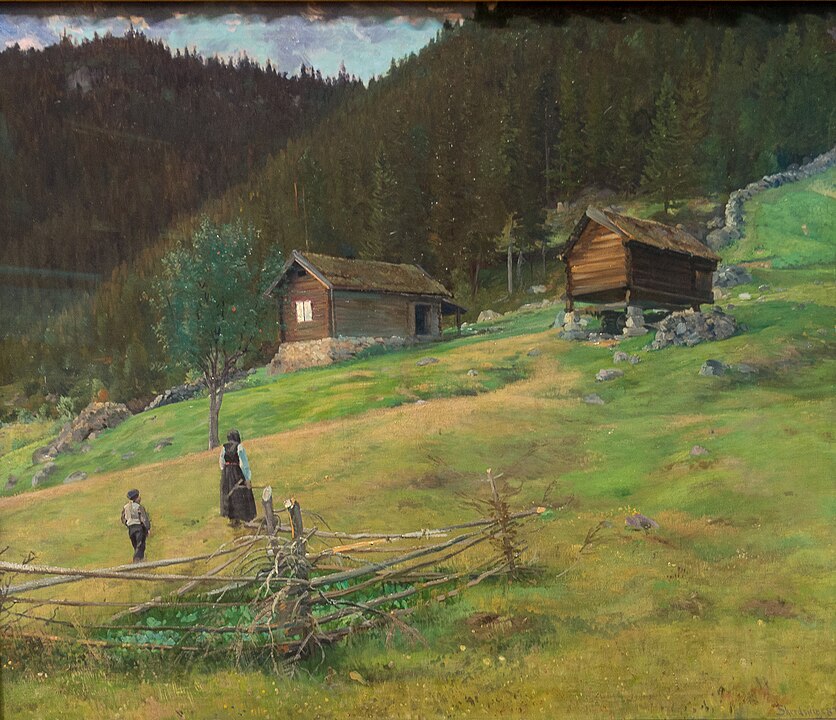
In conclusion, Christian Skredsvig’s biography is a testament to his role as a key figure in the Norwegian naturalist movement. His ability to capture the beauty of rural life and landscapes, coupled with his commitment to preserving the cultural identity of Norway, establishes him as a significant contributor to the nation’s artistic heritage. Skredsvig’s paintings remain a cherished part of Norway’s artistic legacy, inviting viewers to immerse themselves in the tranquility and authenticity of a bygone era.

